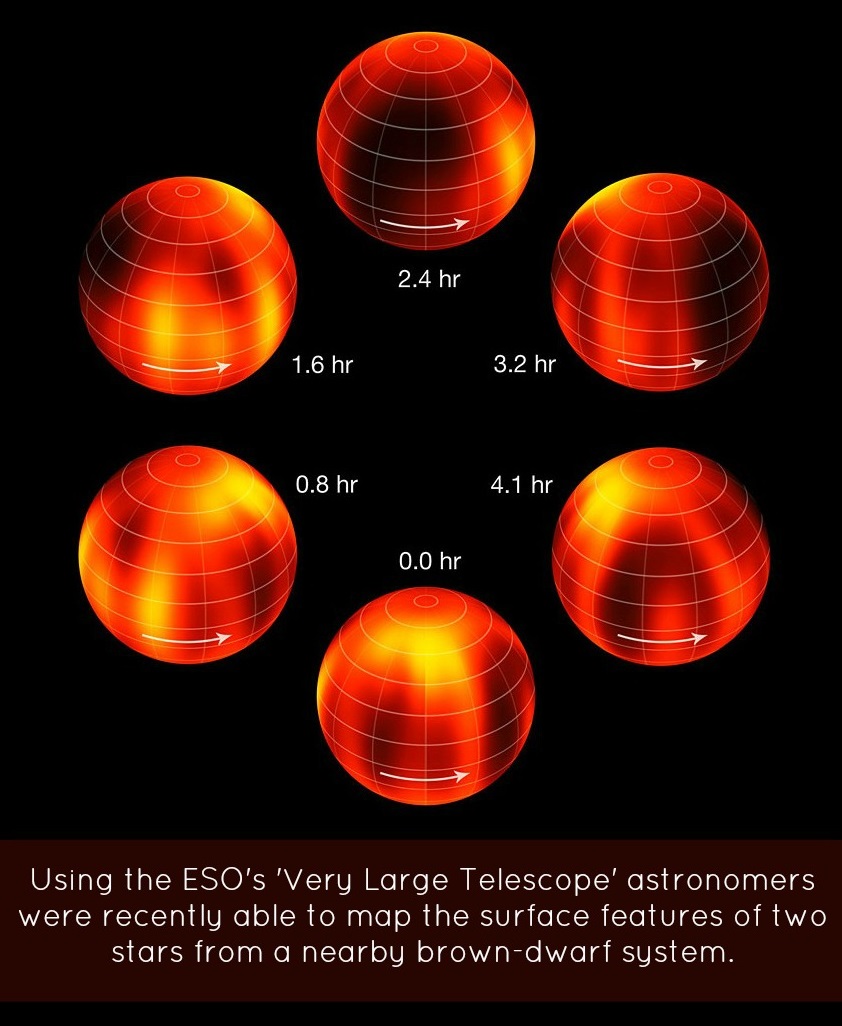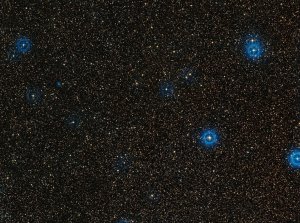

In yet another monumental ‘first’ in astronomy, it was revealed today that the ESO’s “Very Large Telescope,’ played a role in helping astronomers map the variations in light on the surfaces of ‘failed stars’ in a binary brown-dwarf system.
The brown dwarfs in question, called Luhman 16AB, can be found approximately 6 light-years from Earth in the constellation of Vela (the expanse of space they lie in can be seen pictured to the right), which would essentially make it (the system) one of our closest celestial neighbors (bar the Alpha Centauri triple-star-system and Barnard’s Star, a nearby red dwarf).
EXTREME MEASURES:
The pair are but two stars in a very small laundry list of brown dwarfs found to date, so their significance is notable. Yet, the discovery of these brown dwarfs is far surpassed by the fact that technology is now able to use various techniques to derive a weather map of similar star’s (or failed stars) surfaces. In addition, this new accomplishment means that we’re one step closer to being able to not only detect additional brown dwarfs, but map the surface or the upper atmosphere of planets found in orbit around them.
In order to achieve this, the team pointed the VLT at the alien system using the CRIRES (CRyogenic high-resolution InfraRed Echelle Spectrograph) instrument. This spectrography tool was specifically crafted for the purpose of producing a wide-range of data centering on extremely faint objects (at both spectral and temporal resolutions). It essentially helped team leaders perform Doppler imaging of the pair, which highlighted key variations in surface brightness, allowing the team to (quite literally) stare into the belly of not one, but two, celestial beasts.

Taking it a step further, the technology watches as the luminosity varies as the stars rotate on their axes. In doing so, the scientists also received insight into whether or not said features, the dark or the light, were heading toward or away from them. The patterns signify the existence of clouds and weather (recent research indicates that said weather might involve molten iron ‘rain’, salts and various other forms of minerals) that surface within the upper atmosphere.
To compound the full scope of this achievement, Ian Crossfield (Max Planck Institute for Astronomy, Heidelberg, Germany), the lead author of the new paper, had this to say about the findings: “Previous observations suggested that brown dwarfs might have mottled surfaces, but now we can actually map them. Soon, we will be able to watch cloud patterns form, evolve, and dissipate on this brown dwarf — eventually, exometeorologists may be able to predict whether a visitor to Luhman 16B could expect clear or cloudy skies.”
[Reference: MPIA]
AND SINCE WE’RE ON THE TOPIC OF A PLANET:

In December of 2013, scientist’s detected evidence that the binary system might be harboring a giant planet. They came to this conclusion based on the observations performed by the FORS2 instrument on the Very Large Telescope. When observing the movements between the two large bodies, which are separated by about 3 AUs,they noted slight perturbations in their orbits around each other. The most likely explanation for such a perturbation is an unseen planetary object tugging on the stars.
I’ve not seen any followup information posted since the first press release, but it does add another ‘cool’ factor to an already significant study.
You can read the full ESO press release here. This article also references the following papers: “A Global Cloud Map of the Nearest Known Brown Dwarf“[PDF] & “Possible astrometric discovery of a substellar companion to the closest binary brown dwarf system WISE J104915.57–531906.1” (‘WISE J104915.57–531906.1’ has since been renamed to the name used in various parts of our article) [PDF]